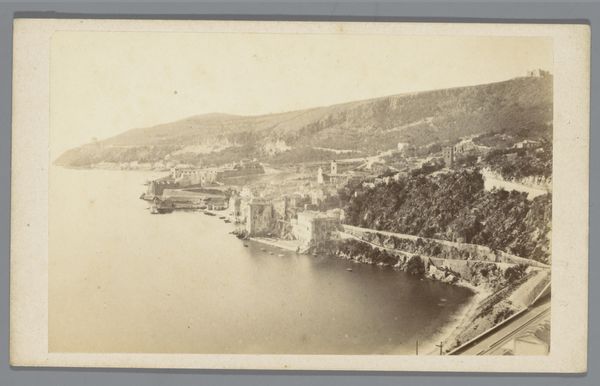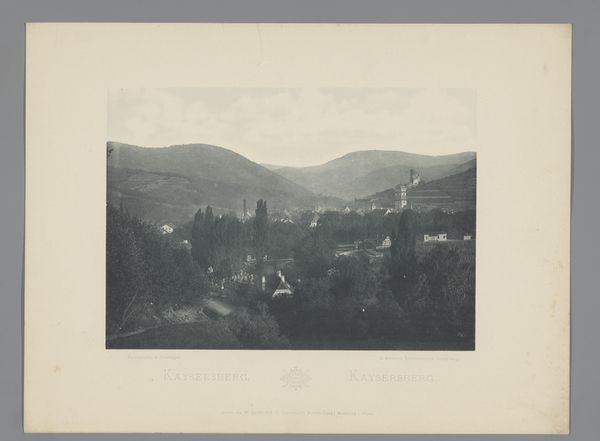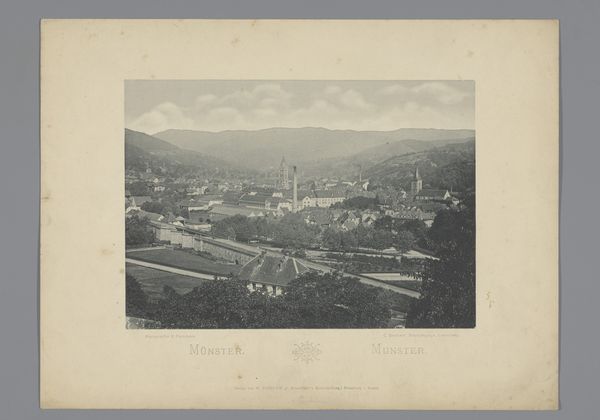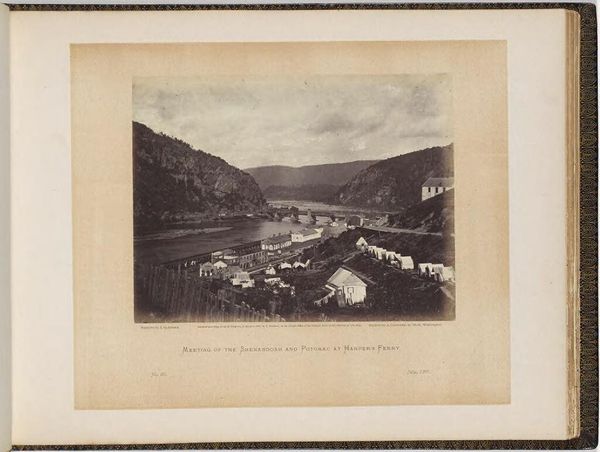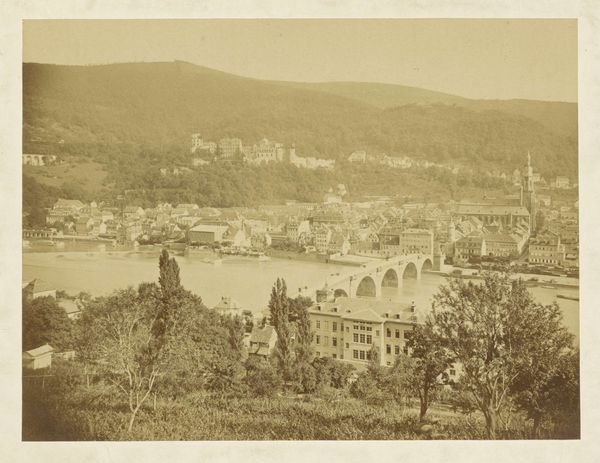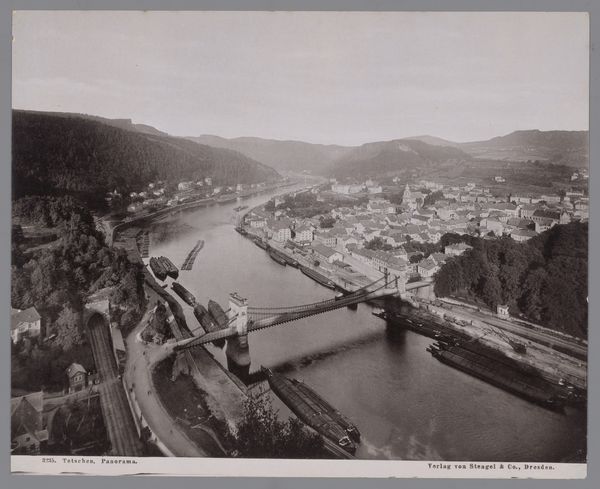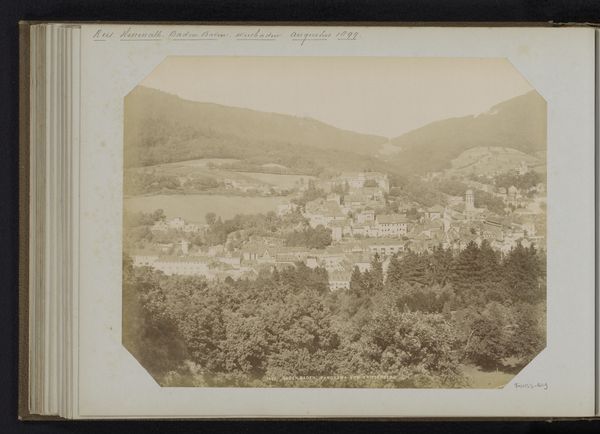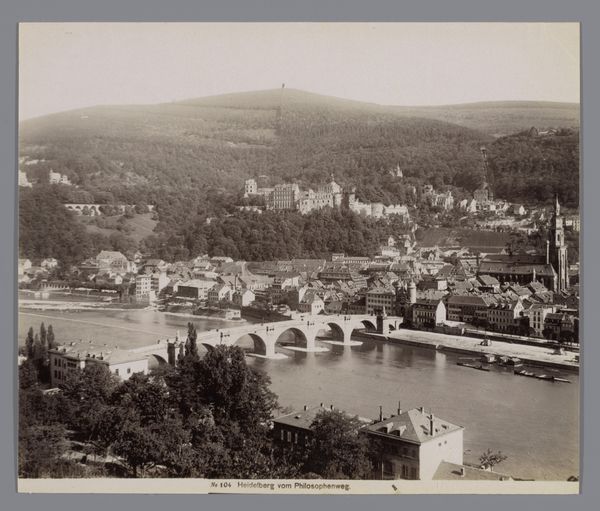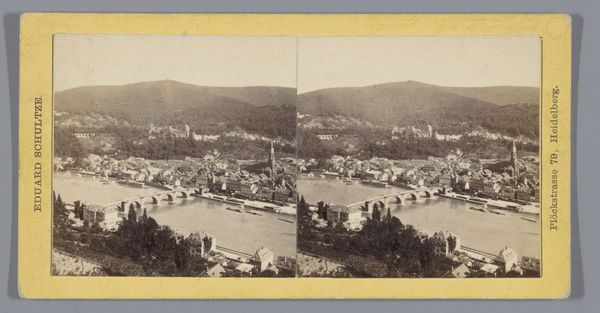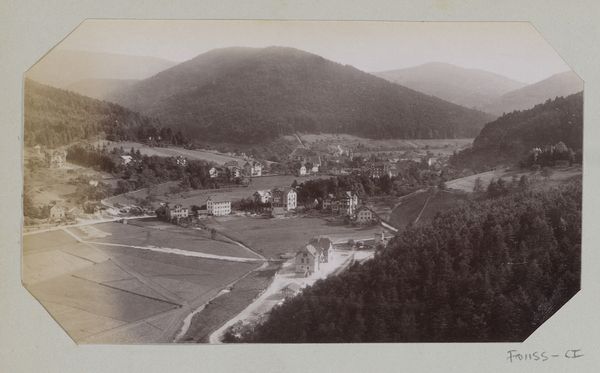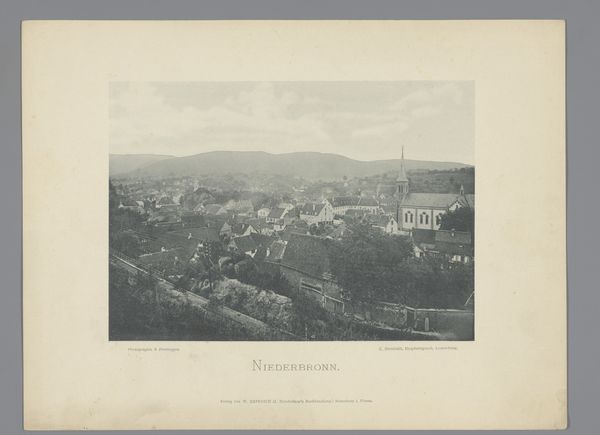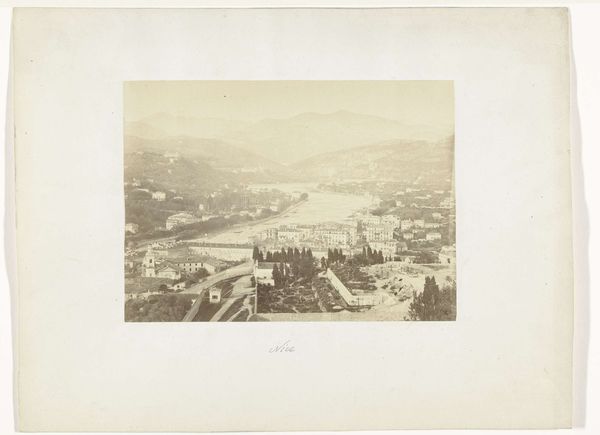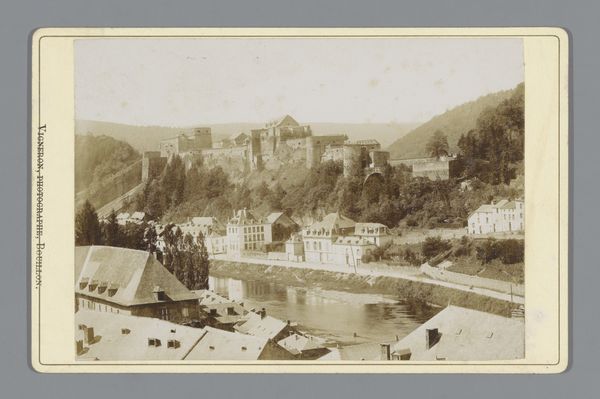
photography, gelatin-silver-print
#
landscape
#
photography
#
gelatin-silver-print
#
cityscape
#
modernism
#
realism
Dimensions: height 230 mm, width 303 mm, height 299 mm, width 400 mm
Copyright: Rijks Museum: Open Domain
Curator: This gelatin-silver print, “Gezicht op Heidelberg,” meaning “View of Heidelberg,” was created by Rolf Kellner sometime between 1924 and 1961. What strikes you about this cityscape? Editor: Immediately, the imposing density of the green hillside is what catches my eye, contrasted with the almost fairytale-like architecture nestled within and beneath it. There’s a softness, but also a sense of containment. Curator: Containment is an interesting observation. Cityscapes like this, particularly when viewed through the lens of Modernism and Realism, can often tell us a lot about the social and political realities of the time. Consider how urban spaces are often shaped by power dynamics. Does the high vantage point change the story? Editor: It definitely centers the observer. It creates an assumed perspective that is detached and privileged. I'm also drawn to the absence of people; it almost feels like a stage set without actors. This emptiness perhaps underscores anxieties about industrialization and alienation so prominent in the interwar period. Curator: Indeed. Kellner's photographic perspective emphasizes the enduring structures, those architectural anchors and physical testaments of cultural heritage. The castle, churches and bridges, all seem deliberately highlighted as though they represent some notion of permanence. The perspective lends itself to questions of what gets preserved in public memory. What about the communities existing there and how they participate in urban planning? Or *are* they participants? Editor: Those are all very important points. Considering how photographs can construct narratives, I wonder what statements are being made by Kellner's compositional choices and focus. By capturing the "Gezicht"—the view—are we presented with a curated reality, perhaps one designed to elicit a specific emotional or intellectual response? And at the time, who had access to this view and how would that demographic alter or shift meaning? Curator: Food for thought as we consider Heidelberg's social and cultural place within broader artistic discourses! This print serves as an entry point for reflection and further questioning, which can transform art appreciation to a much broader exercise in socio-cultural critique. Editor: I agree; art isn't just about the pretty picture but all of its contexts too.
Comments
No comments
Be the first to comment and join the conversation on the ultimate creative platform.
